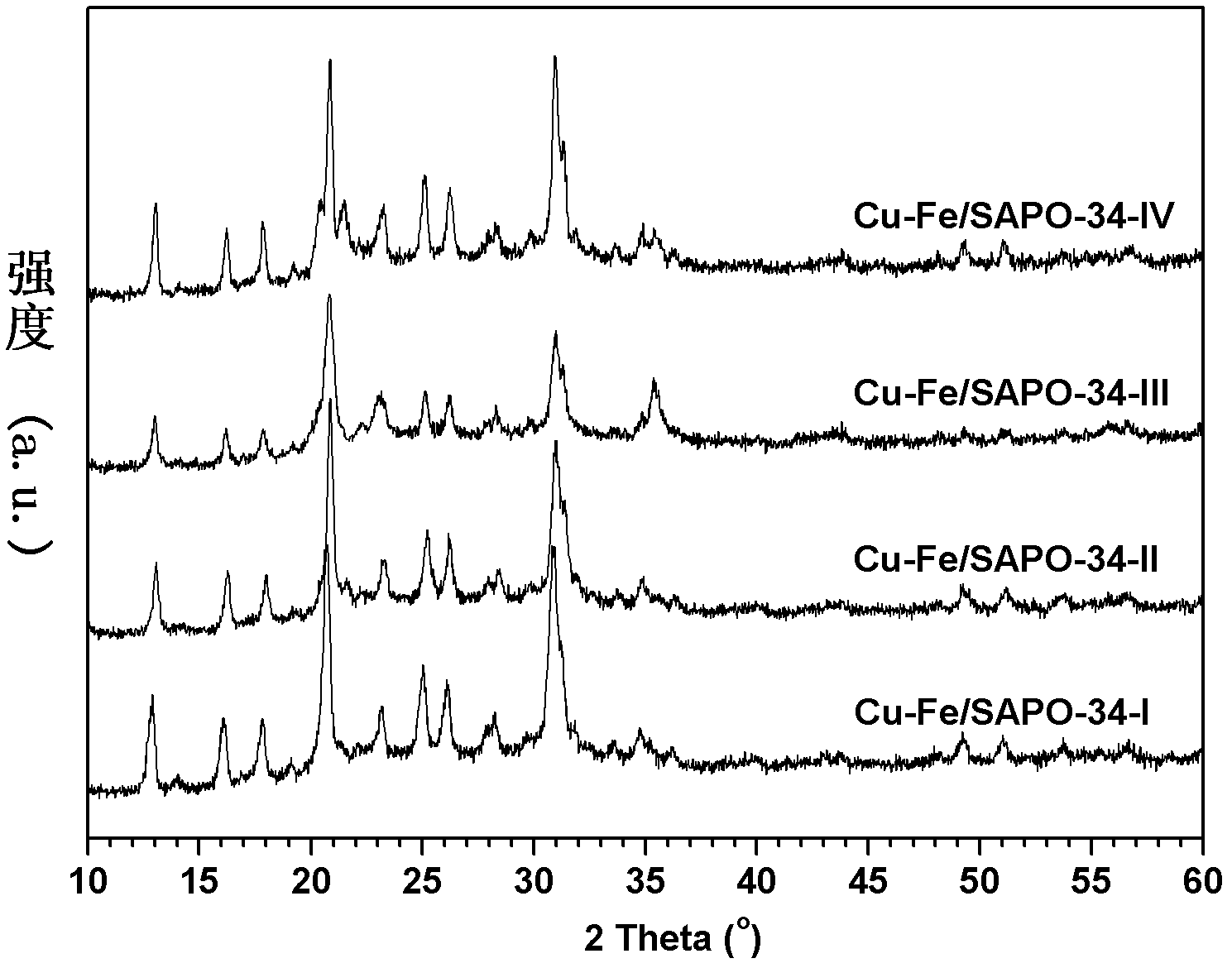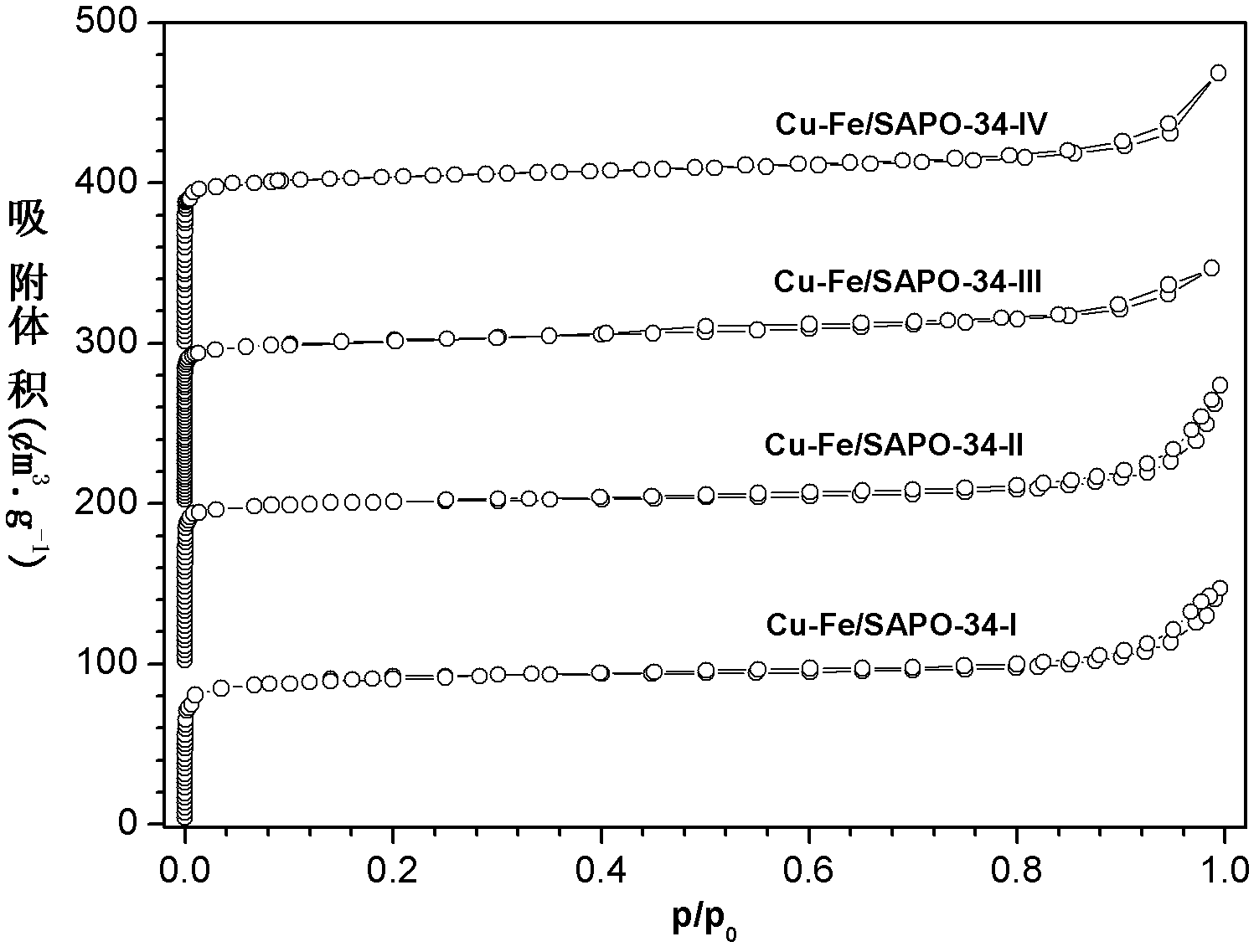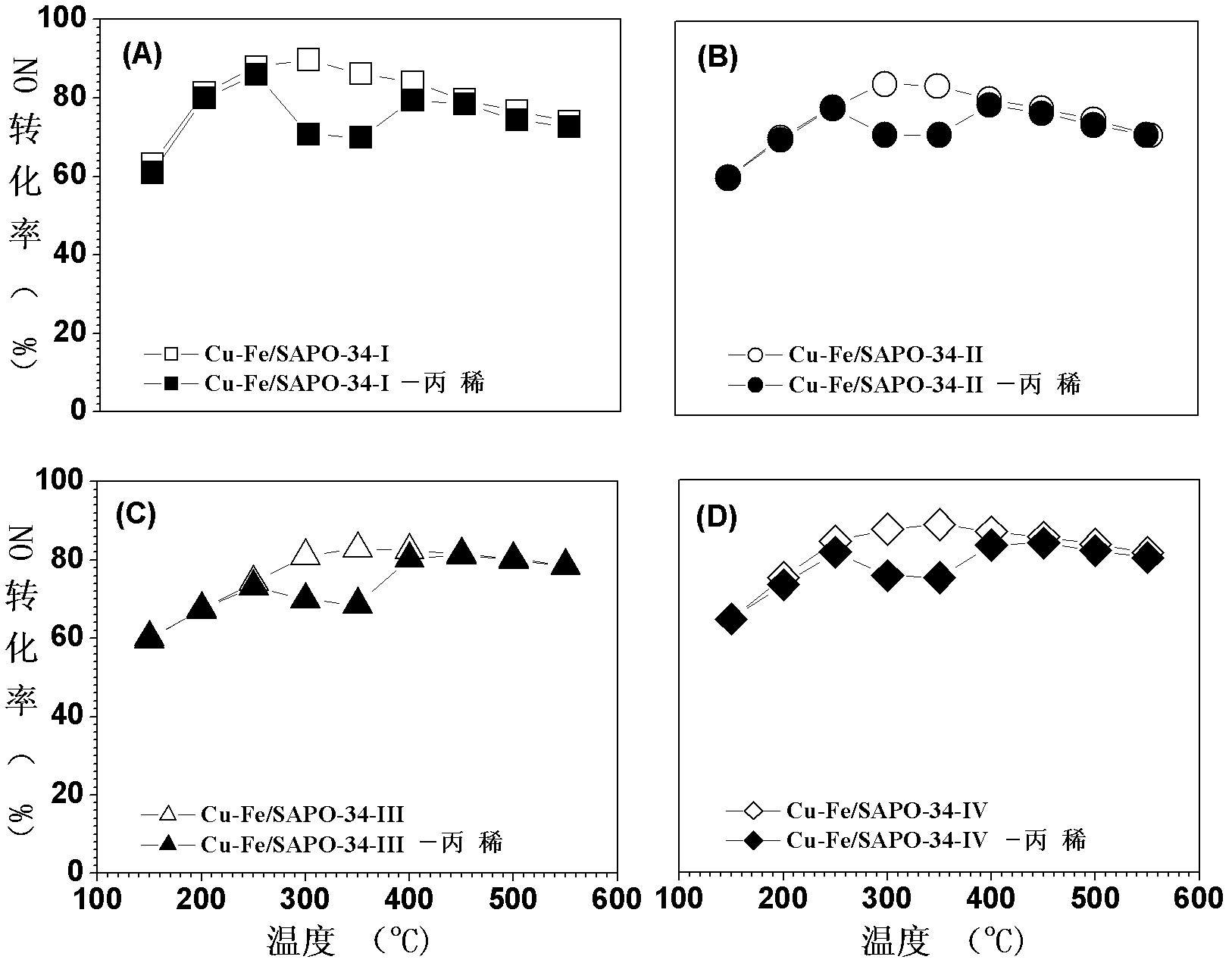Ammonia-selective preparation method of SAPO-34 supported Cu-Fe catalyst for catalytically removing NOx
A SAPO-34, selective technology, applied in physical/chemical process catalysts, molecular sieve catalysts, chemical instruments and methods, etc., to achieve high anti-coking performance, high hydrothermal stability, and stable catalyst activity
- Summary
- Abstract
- Description
- Claims
- Application Information
AI Technical Summary
Problems solved by technology
Method used
Image
Examples
Embodiment 1
[0020] (1) Preparation of SAPO-34
[0021] Aluminum isopropoxide (Al(OC 3 h 7 ) 3 ), phosphoric acid solution and concentrated hydrochloric acid solution were dissolved in water to form a solution, and stirred evenly, and stood at room temperature for 5 days, then added silica sol to the above solution, and stirred evenly, then added tetraethylammonium hydroxide solution, stirred evenly , finally obtain the sol composition ratio (molar molecular weight ratio) as follows:
[0022] 1.39 (TEA) 2 O:0.2SiO 2 : 1.0Al 2 o 3 : 0.88P 2 o 5 : 0.21HCl
[0023] The above sol was left at room temperature for 5 days, and then the sol was added to a stainless steel reactor lined with polytetrafluoroethylene, heated to 200°C, and kept at a constant temperature for 80 hours. The solid product was then filtered, washed and dried in air at 30°C. In order to remove the template agent and other impurities, the obtained solid matter was calcined at 400° C. for 15 hours in an oxygen atmos...
Embodiment 2
[0030] (1) Preparation of SAPO-34
[0031] Aluminum isopropoxide (Al(OC 3 h 7 ) 3 ), phosphoric acid solution and concentrated hydrochloric acid solution were dissolved in water to form a solution, and stirred evenly, and stood at room temperature for 7 days, then added silica sol to the above solution, and stirred evenly, then added tetraethylammonium hydroxide solution, stirred evenly , finally obtain the sol composition ratio (molar molecular weight ratio) as follows:
[0032] 1.11 (TEA) 2 O: 0.33SiO 2 : 1.0Al 2 o 3 : 0.71P 2 o 5 : 0.17HCl
[0033] The above sol was left at room temperature for 7 days, and then the sol was added to a stainless steel reactor lined with polytetrafluoroethylene, heated to 220°C, and kept at a constant temperature for 90 hours. The solid product was then filtered, washed and dried in air at 50°C. In order to remove the template agent and other impurities, the obtained solid matter was calcined at 500° C. for 18 hours in an oxygen atm...
Embodiment 3
[0040] (1) Preparation of SAPO-34
[0041] Aluminum isopropoxide (Al(OC 3 h 7 ) 3 ), phosphoric acid solution and concentrated hydrochloric acid solution were dissolved in water to form a solution, and stirred evenly, and stood at room temperature for 8 days, then added silica sol to the above solution, and stirred evenly, then added tetraethylammonium hydroxide solution, stirred evenly , finally obtain the sol composition ratio (molar molecular weight ratio) as follows:
[0042] 0.83(TEA) 2 O: 0.31SiO 2 : 1.0Al 2 o 3 : 0.66P 2 o 5 : 0.16HCl
[0043] The above sol was left at room temperature for 8 days, and then the sol was added to a stainless steel reactor lined with polytetrafluoroethylene, heated to 230°C, and kept at a constant temperature for 100 hours. The solid product was then filtered, washed and dried in air at 70°C. In order to remove the template agent and other impurities, the obtained solid matter was calcined at 500° C. for 18 hours in an oxygen atm...
PUM
 Login to View More
Login to View More Abstract
Description
Claims
Application Information
 Login to View More
Login to View More - R&D
- Intellectual Property
- Life Sciences
- Materials
- Tech Scout
- Unparalleled Data Quality
- Higher Quality Content
- 60% Fewer Hallucinations
Browse by: Latest US Patents, China's latest patents, Technical Efficacy Thesaurus, Application Domain, Technology Topic, Popular Technical Reports.
© 2025 PatSnap. All rights reserved.Legal|Privacy policy|Modern Slavery Act Transparency Statement|Sitemap|About US| Contact US: help@patsnap.com



